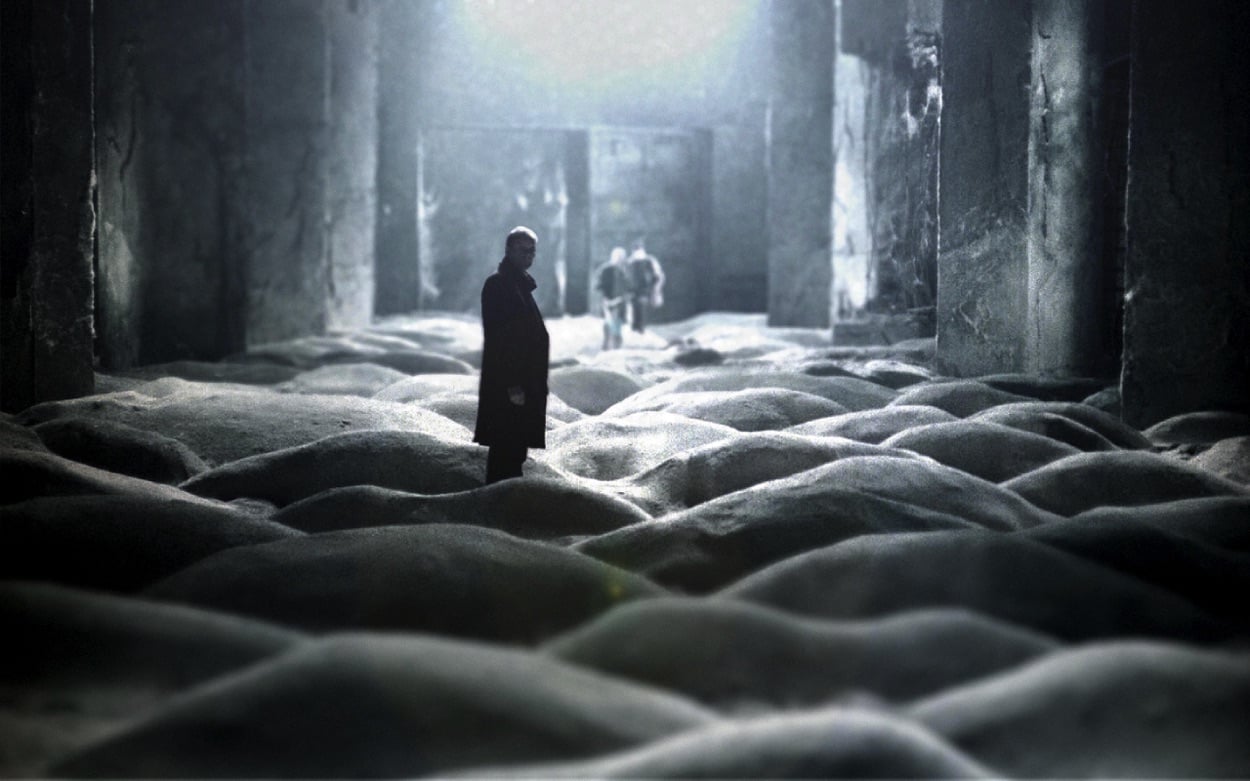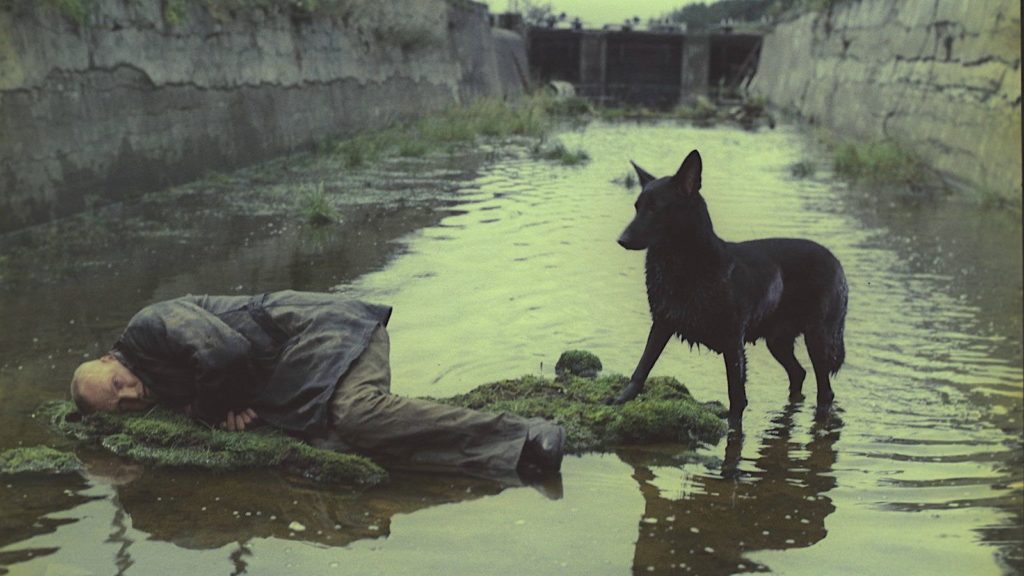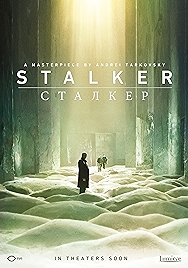Time to rewatch Andrei Tarkovsky’s Stalker, I thought, having recently seen Abel Ferrara’s Siberia (2019) and Gan Bi’s Long Day’s Journey into Night (2018), and noticed how influenced both were by the 1979 film.
As so many films are. Going backwards in time, just grabbing almost at random, there’s Stephen Fingleton’s amazing The Survivalist (2015), Alexey German’s Hard to Be a God (2015), Lars Von Trier’s Melancholia (2011) and Andrey Zvyangintsev’s The Return (2003). Almost all of Terrence Malick’s films owe a lot to Tarkovsky in general and Stalker in particular. Seminal, an overused term, is appropriate here.
Let’s also mention Blade Runner, which appeared in 1982, three years after Stalker. While there isn’t a direct read-across from Tarkovsky to Ridley Scott, there is plenty in terms of mood – the way rain is used, the meditative tone, the contemplative speeches, those big open empty spaces. Poetic sci-fi on a big canvas.
The critical consensus is that Stalker is ponderous but amazing. It’s hard to disagree. It feels every minute of its two hours 40 minutes but what stands out at the end of the experience is its uniqueness, its total artistic self-confidence and its out-of-timeness. There’s something so archetypal about it that it could have been made last week.
I’m going to stick close to the standard way of describing the plot too. Two men – a writer and a scientist (called Writer and Professor) – hire a “stalker” (we would call him a tracker these days, since stalker has picked up distracting connotations down the years) to take them into an area called the Zone, where an alien intelligence landed, did something not entirely specified and then left… possibly. There they are hoping to enter the Room, where all wishes are granted. The writer is hoping for a renewal of his creative drive – he’s an alcoholic cynic – the scientist is hoping to be handed the gift of knowledge. The Stalker is just hoping to get in and out alive. He’s the practical nuts-and-bolts Everyman who’s only doing it for the money. None of them is what you’d really call a character. They’re more ciphers, avatars representing abstracts.
En route, first into the Zone and then on towards the Room, they talk. God, they talk. Tarkovksy, working from the screenplay by the brothers Strugatsky, runs through a list of what might be called “deep” subjects, with the writer doing the majority of the theorising as he expatiates at length about the role of art in the world. Making art is like extruding haemorrhoids, he says at one point. And you know what he means. In a bit of self-flagellation, Tarkovsky makes this artist a well of self pity. The scientist is nobler. Stalker… he’s just a guy.
Tarkovsky divides the film into two parts. Part one is more practical – how they get into the Zone – and realist, part two is more meditative and poetic, contains more of the blinding imagery that sets Stalker visually apart.
In neither do we approach any normal understanding of the meaning of the term “sci-fi”. Tarkovsky had no interest in it as a genre, he’d said as much when making Solaris in 1972, and Stalker could just as easily be described as a fairy tale, a myth or a religious allegory. Genres often, in any case, often got twisted in the USSR, where censorship often made it necessary to express one thing in terms of another.
There’s a genuflection to Robert Bresson (and maybe a nod to Kubrick) in Tarkovsky’s use of camera, which, appropriately, stalks its subjects like a cat stalking prey. So slowly zooming in, creeping left and right in tracking shots, gliding like an angel in his numerous overhead swoops. Malick, most obviously, noticed all this. The colour, meanwhile, switches from a medieval sepia outside the Zone to colour once inside, then back to sepia. At all times Aleksandr Knyazhinsky’s camera is remarkable. Stalker is beautifully lit and composed, with deep, deep focus techniques that were remarkable in the era of film. The Criterion restoration I watched really does it justice.
As to the actors, it’s not an actor’s movie. Aleksandr Kaydanovky (Stalker), Anatoly Solonitsyn (Writer) and Nikolai Grinko (Professor) are all fine, but all three are “appearing in” rather than “starring in” Stalker. The film is the star, and, thanks to Tarkovsky’s use of post-industrial landscapes, it hasn’t dated at all.
Its legacy is huge but it was important at the time because of its massive self-confidence and its staking out of a whole new space for the genre. Up till then, Kubrick maybe to one side, sci-fi had largely been about having fun, adventures in space and all that (even in offbeat sci-fi like George Lucas’s THX 1138 or Douglas Trumbull’s Silent Running). Stalker’s quasi-medieval, largely philisophical, semi-sacral approach opened up new territory. Stalker – and all of Tarkovsky’s output – also validates all film-makers, canonising them as artists, as secular saints, giving them permission to slip the conventions of genre (and, if we’re being unkind, of the necessity for dramatic tension).
And so Stalker ends, with two jokes. In one, Tarkovsky chucks a bone to the “where’s the weird stuff?” crowd, in a very late scene where Stalker’s child does a bit of telekinesis, then he gives us the massively rousing outro music of Beethoven’s Ode to Joy, as if we’d just finished watching Star Wars or something similar. Did we just watch something massively momentous or was it rather 160 minutes of three people just talking? Oddly, both things are true.
Incidentally, I don’t know if there is a “Curse of Stalker” but two of Tarkovsky’s three stars (Kaydanovsky, Solonitsyn) were dead in their 40s. Grinko got as far as 68, which is hardly ancient. DP Knyazhinsky got to 59, Tarkovsky himself was only 54 when he died in 1986, having just completed The Sacrifice.
Stalker (Criterion Collection version) – Watch it/buy it at Amazon
I am an Amazon affiliate
© Steve Morrissey 2021


